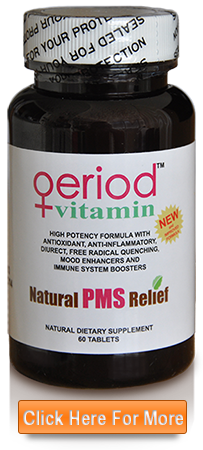 To answer the question, “Is calcium good for PMS?”, you have to know the role of calcium in PMS. What happens in a calcium deficiency with PMS?
To answer the question, “Is calcium good for PMS?”, you have to know the role of calcium in PMS. What happens in a calcium deficiency with PMS?
Calcium does indeed help with PMS – if you’re deficient in it, or if your body needs higher amounts of calcium and you’re not getting enough. But here’s the problem – calcium never works alone in your body. It’s always working together with magnesium, phosphorus, and vitamin D. Thus, when considering what kinds of calcium to take or even how much calcium should I take, you really have to consider the whole picture of what to take to upgrade your nutritional status.
Some of the forms of calcium include calcium carbonate, calcium citrate, calcium hydroxyapatite, dolomite, and bone meal. All of these forms of calcium don’t contain additional minerals.
For example, dolomite is calcium and magnesium but no phosphorus. Bone meal contains calcium, magnesium and phosphorus. Calcium hydroxyapatite and calcium citrate as well as calcium carbonate are forms that generally only contain calcium, not magnesium or phosphorus.
This means that over time you will grow deficient in the nutrients you are not giving your body.
The PMS Treatment that will be responsible for relieving PMS symptoms such as cramping is dependent on your intake of milk and dairy products. There’s about 250 mg calcium in a glass of milk so if you’re getting 2 glasses of milk daily down, then that’s 500 mg of the 800-1000 mg calcium needed daily. Depending on your leafy greens consumption, you might be taking in another 100-150 mg calcium daily. Thus your dosage for taking calcium would be 250-300 mg calcium, with half that amount in phosphorus and magnesium.
A calcium supplement is best taken with food so it can be absorbed in the body. When patients ask me when to take it, I reply at the end of your meal.
 You should always have a doctor run a vitamin D test annually to see where your levels are. When you have a deficiency of vitamin D, your body won’t absorb all the calcium it needs because it can’t. Many women work 9 to 5 and can’t get natural sunshine every day so their vitamin D levels fall to deficient levels. The lab scale is 0-100 ng/dl and deficiency is considered anywhere from 0-30.
You should always have a doctor run a vitamin D test annually to see where your levels are. When you have a deficiency of vitamin D, your body won’t absorb all the calcium it needs because it can’t. Many women work 9 to 5 and can’t get natural sunshine every day so their vitamin D levels fall to deficient levels. The lab scale is 0-100 ng/dl and deficiency is considered anywhere from 0-30.
However, ideal levels are between 55 and 75 ng/dl so you can see that a level of 30 doesn’t really mean you have enough; it only means that you have half the amount your body needs to do an excellent job at providing you wellness.
One way to get a good amount of vitamins and minerals that support your body during your periods is via a period vitamin. What this is is a multivitamin and mineral that contains several different vitamins and minerals as well as herbs that your body needs during the menstrual cycle. These nutrients would be different than what you would need during pregnancy or during menopause.
A period vitamin is a one a day vitamin so it’s easy to take. Check your current vitamins and minerals for calcium / magnesium ratio. The ratio should be 2:1 or twice as much calcium as magnesium. The phosphorus should be the same amount as magnesium. And the vitamin D levels should be 2000 IU daily to maintain already good levels of the nutrient or if you’re deficient, a lot more (10,000 IU daily for 3 months).
All this helps your cramps go away during PMS.


